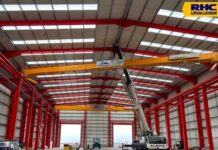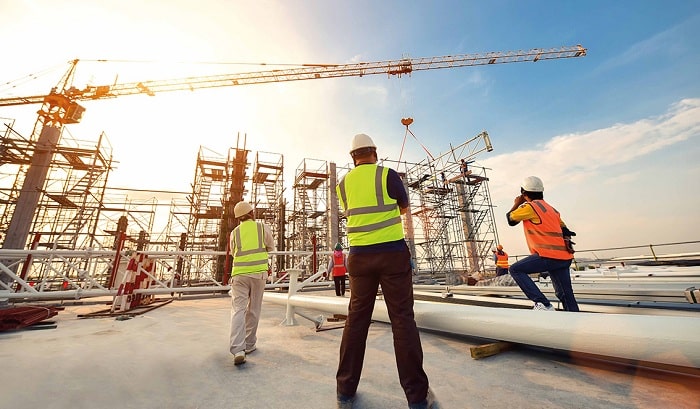When you’re heading to work at a construction site, keeping yourself safe on the jobsite is crucial for your well-being.
With work injuries becoming more common, it’s now more important than ever to take the extra precautions and learn how to be safe at a construction site.
So what exactly are the best tips to be safe while working in potentially dangerous or hazardous construction sites? Let’s find out.
Tip 1: Wear Appropriate Personal Protective Equipment (PPE)
The first and most important step is to wear and utilize Personal Protective Equipment.
This gear can be everything from helmets, safety harnesses, vests, or hand protection.
Having PPE is just the first step, since it also needs to be worn properly. If you’re ever on a construction site, make sure that all your equipment is safe and secure around your body.
Sharp or heavy objects at a work site such as bricks, or even slippery services can injure you if you’re not careful.
Tip 2: Stay Informed about OSHA Regulations
If you don’t already know, OSHA (Occupational Safety and Health Administration) was formed after the Occupational Safety and Health Act of 1970 to ensure safe and healthful working conditions.
The primary purpose of OSHA is to enforce safe working standards across dangerous industries, especially construction or most blue collar work.
So as a construction worker, you will likely be trained on how OSHA works, along with the regulations that you need to abide by. It’s also important to stay aware regarding what constitutes an OSHA violation, as well as how they can keep workers safe in a general sense.
Often times, the most common OSHA violations are:
- Lack of Fall Protection
- Improper Use of Ladders
- No Control of Hazardous Chemicals
- Improper Use of Forklift
- No Eye and Face Protection
By knowing these techniques, you can stay informed on how to comply with OSHA regulations in the best possible way.
Tip 3: Conduct Regular Safety Training
Construction is an inherently risky profession, but ongoing safety education empowers workers to identify and avoid hazards. Regular training sessions should go beyond basic compliance and address site-specific risks, updated regulations, and emergency procedures. Invest in interactive workshops, demonstrations, and practical exercises to keep workers engaged and ensure knowledge retention
Tip 4: Utilize Proper Lifting Techniques
Musculoskeletal injuries (MSIs are a major concern in construction. Implement training on proper lifting techniques, emphasizing using legs, maintaining neutral spine, and avoiding twisting. Encourage teamwork for heavy objects and provide lifting aids.
Tip 5: Keep Work Areas Clean and Organized
A cluttered workspace is an accident waiting to happen. Dedicate time to cleaning debris, tools, and materials regularly. Establish designated storage areas and enforce procedures for proper tool and equipment placement. A clean site promotes efficiency and reduces tripping hazards.
Tip 6: Be Mindful of Heavy Equipment and Machinery
Large machinery poses significant risks. Implement designated walkways, clear communication protocols, and visual barriers when necessary. Operators should stay vigilant and only allow authorized personnel near equipment.
Tip 7: Stay Hydrated and Take Breaks
Dehydration and fatigue lead to lapses in concentration and increase accident risks. Encourage workers to stay hydrated throughout the day, providing easily accessible water stations and reminding them to drink regularly. Implement scheduled breaks in cool, shaded areas to combat fatigue.
Tip 8: Communicate Effectively with Team Members
Clear communication is critical for preventing accidents. Conduct regular safety briefings and toolbox talks to discuss upcoming tasks, potential hazards, and safety procedures. Encourage open communication about concerns and near misses.
Tip 9: Emergency Preparedness
Being prepared for emergencies saves lives. Develop and regularly practice a site-specific emergency response plan that includes evacuation procedures, fire drills, and medical response protocols. Ensure everyone knows the location of emergency exits, first aid kits, and fire extinguishers.
If you’re ever in a place where you’ve been injured at a construction site, it should be in your best interest to all a personal injury lawyer in Westminster, Colorado.
Tip 10: Report Unsafe Conditions
Empower workers to report unsafe conditions without fear of retribution. Foster a culture of open communication and address reported hazards promptly. Everyone plays a role in maintaining a safe work environment.
Make Sure To Stay Safe Today
Remember, safety is not a single person’s responsibility; it’s a collective effort. By implementing these ten tips and fostering a culture of safety awareness, you can contribute to a construction site where everyone returns home healthy and unharmed.
Let’s prioritize safety and build a secure workplace together.



































